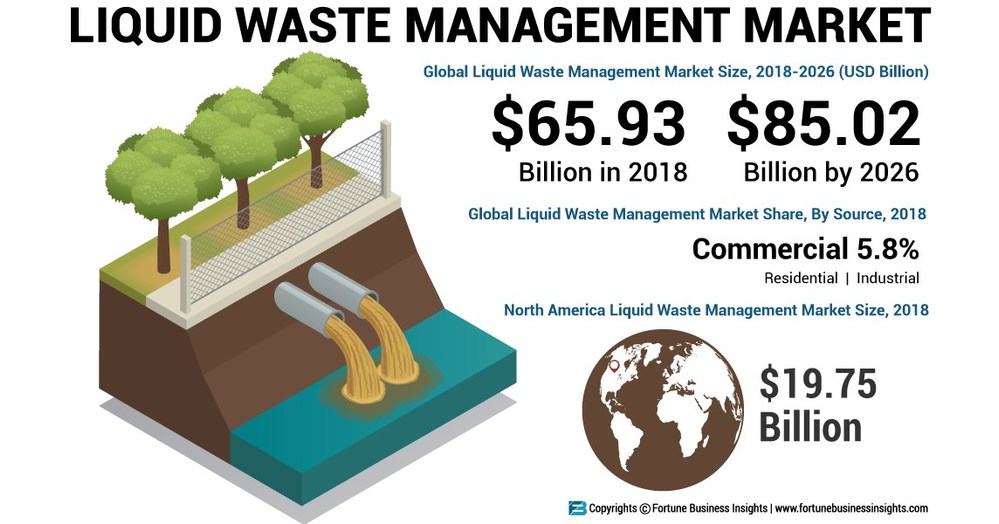The Reclaim Waste Diaries
The Reclaim Waste Diaries
Blog Article
Fascination About Reclaim Waste
Table of ContentsSome Of Reclaim WasteSome Ideas on Reclaim Waste You Should KnowSome Known Factual Statements About Reclaim Waste The Best Strategy To Use For Reclaim WasteFascination About Reclaim Waste
Explore the types, incidents, and forms of fluid waste. Residential sewer waste refers to the waste and items from a residential sewage-disposal tank. This sort of waste is produced by human beings in residences, colleges, and other buildings. This only consists of sewage-disposal tanks that have a drain field. The proper monitoring and disposal of domestic sewer waste need liquid waste to be moved to a sewer treatment plant where the appropriate approaches and devices are used to cleanse and dispose of waste.
Business waste usually consists of potential risks, such as combustible materials or a blend of liquid and strong waste products, and calls for a more advanced and comprehensive disposal process. The disposal of commercial waste usually involves the filtration of waste before transport to ensure safe and correct disposal. Industrial waste is created from results and runoff of industrial procedures and production.
This sort of waste can not make use of the same sewage administration transport or procedures as septic or business liquids. The industrial waste management procedure requires the inspection and screening of liquid waste prior to it goes through the disposal process (industrial wastewater treatment). Overflow waste is the liquid waste that comes from overflow and excess stormwater in very inhabited areas or cities
Runoff waste can trigger contamination and flooding if not taken care of correctly. Making sure appropriate waste administration can avoid calamities and lower environmental harm.
The 45-Second Trick For Reclaim Waste
Contact PROS Services today to learn more about our waste monitoring and disposal services and the appropriate ways to take care of the fluid waste you create.
(https://www.behance.net/leonaube)This so-called 'wastewater' is not just an essential resource yet, after therapy, will be released to our land, rivers or the ocean. Made use of water from toilets, showers, baths, kitchen sinks, washings and commercial processes is known as wastewater.

water used to cool down machinery or clean plant and equipment). Stormwater, a form of wastewater, is drainage that moves from agricultural and urban locations such as roof coverings, parks, gardens, roads, courses and gutters right into linked here stormwater drains pipes, after rain. Stormwater flows without treatment straight to regional creeks or rivers, at some point getting to the sea.
Our Reclaim Waste PDFs
In Queensland, a lot of wastewater is treated at sewage treatment plants. Wastewater is transferred from residential or industrial websites with a system of sewers and pump stations, called sewage reticulation, to a sewer treatment plant. City governments build, maintain and operate most sewer therapy plants. Operators are certified under the Environmental Management Act 1994 to discharge cured wastewater at an appropriate ecological requirement into rivers.
The Division of Natural Resources recommends city governments concerning managing, operating and maintaining sewerage systems and therapy plants. In unsewered areas, city governments may require householders to mount individual or home sewer treatment systems to deal with domestic wastewater from toilets, kitchen areas, bathrooms and washings. The Department of Natural Resources authorises using home systems when they are confirmed to be reliable.
In some brand-new communities, therapy of some stormwater to remove clutter, sand and gravel has actually begun utilizing gross pollutant traps. Wastewater treatment takes place in 4 stages: Gets rid of strong matter.
Utilizes little living microorganisms knows as micro-organisms to damage down and remove remaining dissolved wastes and great fragments. Micro-organisms and wastes are incorporated in the sludge.
Reclaim Waste Fundamentals Explained
Nutrient removal is not available at all sewer therapy plants due to the fact that it calls for expensive specialized tools. It is coming to be a lot more common in Queensland. Clear fluid effluent generated after treatment might still have disease-causing micro-organisms. If this effluent is launched right into waterways such as rivers or the sea, the micro-organisms will ultimately pass away out.

This usually implies wastewater has to be dealt with or impurities eliminated prior to it can be discharged to rivers. Many wastewater flows into the sewerage system. Under the Act, city governments administer authorizations and permits for eco relevant tasks (Periods) entailing wastewater releases that could have a local influence. The division administers authorizations and permits to ERAs involving wastewater launches that may have a regional or statewide effect.
The 5-Minute Rule for Reclaim Waste
Or else, examples are taken for laboratory evaluation. Frequently several tests are required to establish the levels of each of the various contaminants such as oils, heavy metals and chemicals in water. Monitoring provides factual details regarding water top quality and can confirm that licence conditions are being fulfilled. The info acquired with monitoring gives the basis for making water high quality decisions.
Report this page